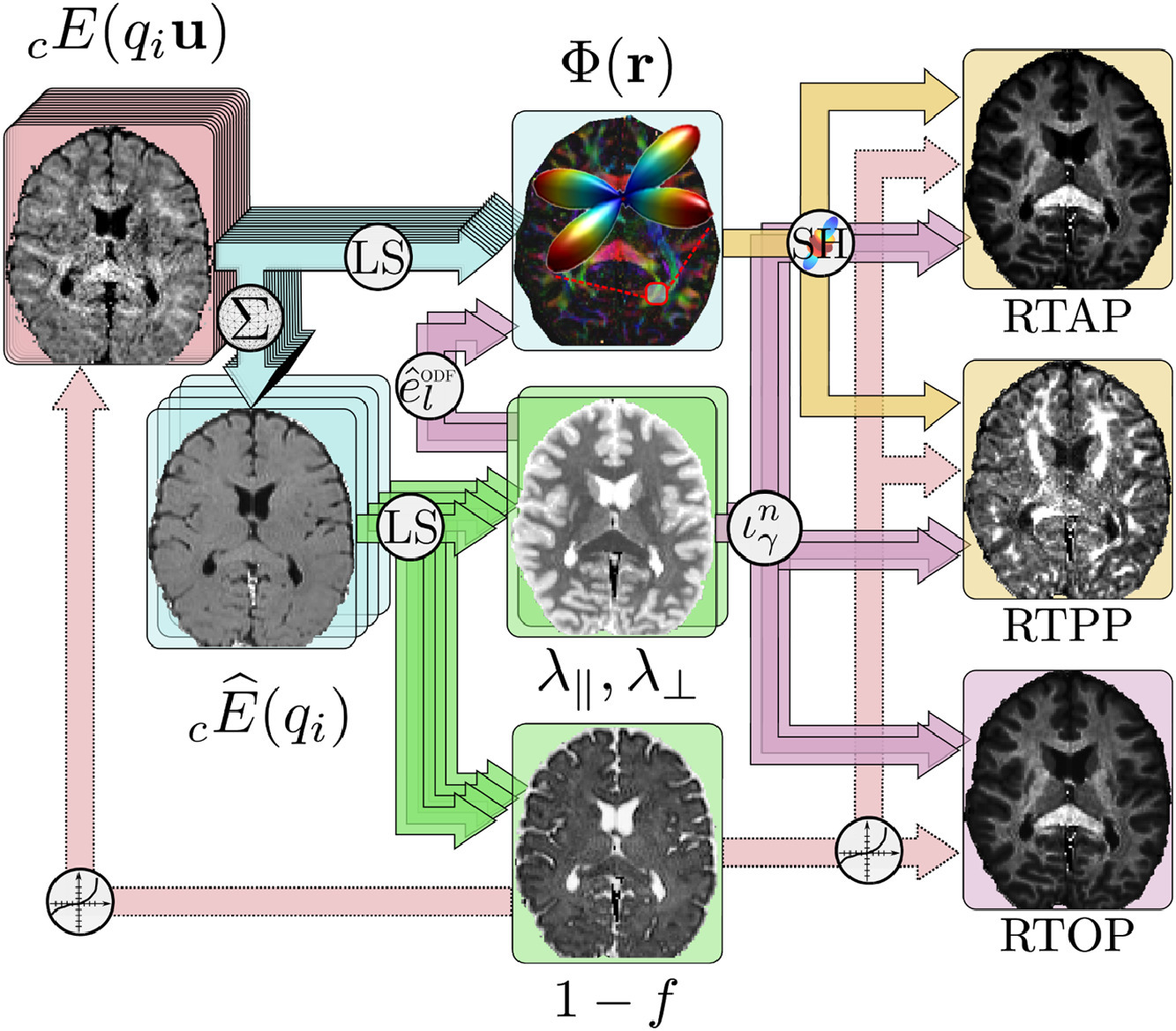MiSFIT: Efficient and accurate EAP imaging from multi-shell dMRI

Do you want to estimate advance diffusion features, time-efficiently and accurately? With 2 shells and a couple of minutes, MiSFIT can do the magic. The paper entitled "Efficient and accurate EAP imaging from multi-shell dMRI with Micro-Structure adaptive convolution kernels and dual Fourier Integral Transforms (MiSFIT)" has been accepted in Neuroimage. Great work about white matter directly from Antonio's gray matter. You can downloaded from [here]. Source code with examples available [here].
Abstract
A number of computational techniques have been lately devised to image the Ensemble Average Propagator (EAP) within the white matter of the brain, propelled by the deployment of multi-shell acquisition protocols and databases: approaches like Mean Apparent Propagator Imaging (MAP-MRI) and its Laplacian-regularized version (MAPL) aim at describing the low frequency spectrum of the EAP (limited by the maximum b-value acquired) and afterwards computing scalar indices that embed useful descriptions of the white matter, e. g. the Return-to-Origin, Plane, or Axis Probabilities (RTOP, RTPP, RTAP). These methods resort to a non-parametric, bandwidth limited representation of the EAP that implies fitting a set of 3-D basis functions in a large-scale optimization problem. We propose a semi-parametric approach inspired by signal theory: the EAP is approximated as the spherical convolution of a Micro-Structure adaptive Gaussian kernel with a non-parametric orientation histogram, which aims at representing the low-frequency response of an ensemble of coherent sets of fiber bundles at the white matter. This way, the optimization involves just the 2 to 3 parameters that describe the kernel, making our approach far more efficient than the related state of the art. We devise dual Fourier domains Integral Transforms to analytically compute RTxP-like scalar indices as moments of arbitrary orders over either the whole 3-D space, particular directions, or particular planes. The so-called MiSFIT is both time efficient (a typical multi-shell data set can be processed in roughly one minute) and accurate: it provides estimates of widely validated indices like RTOP, RTPP, and RTAP comparable to MAPL for a wide variety of white matter configurations.
